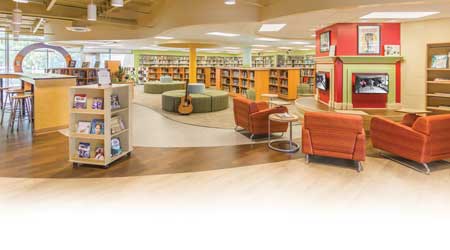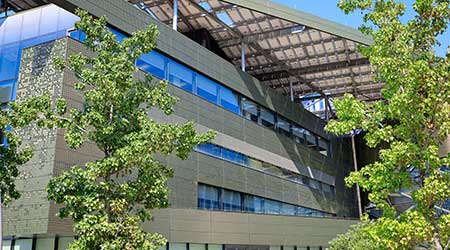 The Westerville City School District has upgraded a range of lighting, HVAC, and electrical systems in schools and other facilities over the last 12 years to create more effective learning environments and, in the process, has saved nearly $21 million in energy costs.
The Westerville City School District has upgraded a range of lighting, HVAC, and electrical systems in schools and other facilities over the last 12 years to create more effective learning environments and, in the process, has saved nearly $21 million in energy costs.School District Upgrades Focus on Energy Savings
Westerville City School District rethinks and upgrades facilities to help students and save energy
The upgrades began as an effort by Westerville (Ohio) City School District to curtail energy use among its aging stock of buildings. The targets were systems familiar to maintenance and engineering managers in institutional and commercial facilities — lighting, HVAC and electrical — and they succeeded.
“Our energy management program has resulted in a savings of over $21 million over the past 12 years,” says Jeff Lerose, the district’s director of capital improvements.
In the ensuing years, though, the scope and vision of the upgrades broadened to incorporate additional goals. Now, energy efficiency has merged with student-centric design and new-generation maintenance to create facilities that provide cost-effective, comfortable learning environments.
“We realized the importance of how the physical environment can accelerate a student’s ability to learn,” Lerose says. “It became our mission to create spaces where students want to be and that promotes a curiosity for learning.”
All eyes on energy
The upgrade program initially sought to replace aging equipment in order to improve the energy efficiency in the 26-school district, where the average facility age is 51 years. It also sought to curtail problems with facilities — building temperatures exceeding occupant comfort ranges, plumbing failures that affect restroom operations, for example — that were interfering with learning.
“We started by looking at building components that can have the greatest impact on the learning environment — moisture control and temperature control,” says Lerose, whose facilities contain nearly 2.2 million square feet and host 15,321, students and 1,542 staff members. “We focused immediately on roofing and HVAC.” He points to these upgrades as helping the district achieve its energy goals:
Interior lighting. Upgrading from T12 to T8 or T5 bulbs with electronic ballasts, as well as upgrading commons lighting and emergency and exit lights to use LEDs.
Exterior lighting. Upgrading exterior building lights and parking lot lights to LEDs and replacing stadium lighting with more efficient fixtures.
HVAC. Replacing older HVAC units with more efficient models, replacing older and oversized boilers with smaller and more efficient units, and adding variable-frequency drives to some HVAC units.
Structures. Replacing energy-draining windows and doors with energy-efficient units, replacing roofing and insulation, and installing water-saving fixtures.
“After that, it was the bricks and mortar,” he says. “We assessed openings in exterior walls and implemented an annual tuckpointing repair program. Currently, we are evaluating our plumbing and electrical program for improvements.” The district’s energy efficiency efforts went beyond upgrades of key systems.
“In 2007, we contracted with a company who provided a full-time energy manager to oversee our energy conservation program,” Lerose says. “The energy manager would go from building to building at random hours to verify that we were compliant with lighting and equipment being turned off when not in use. The energy manager also worked with our facilities department to insure that our HVAC equipment was programmed for an off-hour setback mode.
“We also performed infrared scans of all roofs to detect areas of wet insulation, which prompted a more aggressive roof repair and replacement program. Each year, we continue to place more of our HVAC equipment on controls. This makes it much easier for our HVAC team to maintain desired building temperature levels and program off-hour setback modes.
Related Topics:














